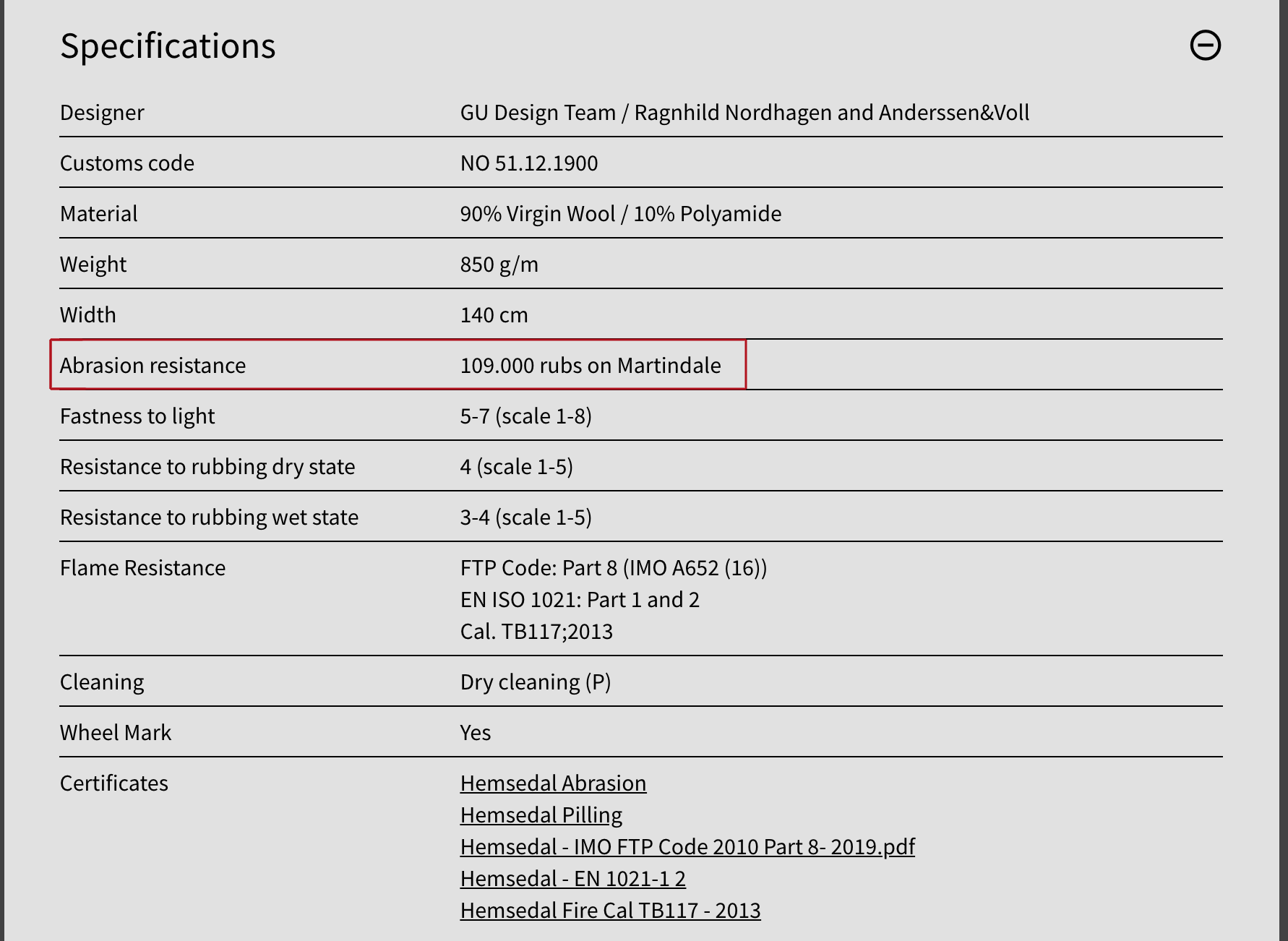THE MARTINDALE TEST
De-mystifying upholstery
You have this beautiful old, piece of furniture, or stumble across one somewhere, but it needs some love. You start thinking about having it re-upholstered but worry about the price tag. Upon requesting a quote for restoration people may suffer what we call “price shock”. After all, these days you can find new furniture in any price range, as long as you are willing to compromise on quality, durability, and sustainability. Without knowing why some things cost so much more than others, it’s easy to feel disappointed, or even misled. Restoring should be cheaper than getting something new, right?
Well, maybe not. We’ll be starting a blog series on the different elements that make up the cost of restoring old furniture. What they are, what the difference is between them and so on to help you make informed choices about what is best for you. First up, is textile choices.
Image by Dida Sundet Photography
Fabric- on quality and durability
The Martindale test – or ‘double rubs’
When it comes to upholstery fabrics one of the most important choices you make will be in relation to durability. How long will it last? Thankfully, these textiles undergo an abrasion resistance test often referred to as ‘double rubs’, the Martindale test. The Martindale test is widely used in Australia and Europe. You may have come across this term before, or maybe you’ve seen a chair in a display case at IKEA with some strange machine simulating the motion of someone sitting down and getting off the chair? That’s the one.
The ‘double rubs’ refers to a process of testing fabric resilience to see how many motions similar to those of sitting down or getting up from a chair it takes before it shows wear. The type of durability you need for your furniture depends on how frequently it is used.
The rating varies somewhat between manufacturers, but overall it is safe to say that the more rubs, the better. Here is a general overview of the various categories;
DECORATIVE: less than 10,000 rubs. This refers to fabric suitable for decorative purposes, like throw cushions or accents. This type of fabric is not suitable for domestic use, like sofas and chairs.
LIGHT DOMESTIC: 10,000 – 15,000 rubs. These are often delicate fabrics that won’t stand everyday use. Suitable for similar uses to above, and for formal sittings with less frequent use.
GENERAL DOMESTIC: 15,000 – 25,000 rubs. This is your everyday fabric, and is suitable for domestic furniture, however may not be the best choice for ‘motion furniture’, furniture like recliners or ones that will put high stress on the fabric. It is also not recommended for furniture that sees frequent use.
HEAVY DUTY: 25,000 -30,000 rubs. This is where you will find most textiles that will give you the most bang for your buck when it comes to durability. Living room furniture that sees ‘heavy traffic’ will generally need a heavy-duty fabric for an extended life.
COMMERCIALLY GRADED: This one is for any heavy duty commercial or domestic use. Suitable for all environments.
But how do I find out about this? The abrasion rating is listed with the fabrics. Textile manufacturers supply product information on their samples. The below examples are from the Deploeg website, and Gudbrandsdalens Uldvarefabrik.
The Martindale test is for abrasion only. These numbers are only one part of the story. If you break it down to something we can relate to, let’s say you have a chair that someone gets in and out of 20 times every single day. This equals 7,300 double rubs in a year. With a 50,000 Martindale rating you would estimate 6.8 years before you see any visible wear.
There are lots of other elements to factor in when it comes to deciding what fabric is best suited for you and your home. Do you have pets or children, does the furniture get lots of sunlight? Price point itself isn’t necessarily a reflection on durability. Fabrics, like furniture, come in all price ranges. And like furniture, it takes a little more than first impressions to reveal and find a balance between what you need and your budget. While durability is important, it doesn’t mean the most expensive fabrics will be the most durable.
We will be unpacking all of this and more in the coming weeks.
Subscribe to our newsletter so make sure you don’t miss out on special offers, new listings and blogs!
If you have any specific questions, or topics you’d like to know more about, send us an email at hello@dumpedandditched.com



